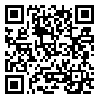Volume 75, Issue 11 (February 2018)
Tehran Univ Med J 2018, 75(11): 790-796 |
Back to browse issues page
Download citation:
BibTeX | RIS | EndNote | Medlars | ProCite | Reference Manager | RefWorks
Send citation to:



BibTeX | RIS | EndNote | Medlars | ProCite | Reference Manager | RefWorks
Send citation to:
Saghafi M M, Fatemi M J, Bagheri T, Hablolvarid M H, Niazi M, Saberi M et al . The effect of Arnebia euchroma ointment on healing of deep second-degree burn wound in rat. Tehran Univ Med J 2018; 75 (11) :790-796
URL: http://tumj.tums.ac.ir/article-1-8540-en.html
URL: http://tumj.tums.ac.ir/article-1-8540-en.html
Mohammad Mehdi Saghafi * 
 1, Mohammad Javad Fatemi2
1, Mohammad Javad Fatemi2 
 , Tooran Bagheri3
, Tooran Bagheri3 
 , Mohammad Hasan Hablolvarid4
, Mohammad Hasan Hablolvarid4 
 , Mitra Niazi5
, Mitra Niazi5 
 , Mohsen Saberi6
, Mohsen Saberi6 
 , Shirin Araghi3
, Shirin Araghi3 


 1, Mohammad Javad Fatemi2
1, Mohammad Javad Fatemi2 
 , Tooran Bagheri3
, Tooran Bagheri3 
 , Mohammad Hasan Hablolvarid4
, Mohammad Hasan Hablolvarid4 
 , Mitra Niazi5
, Mitra Niazi5 
 , Mohsen Saberi6
, Mohsen Saberi6 
 , Shirin Araghi3
, Shirin Araghi3 

1- Department of Clinical Pharmacology, Firouz Abadi Hospital, Iran University of Medical Sciences, Tehran, Iran.
2- Department of Plastic and Reconstructive Surgery, Burn Research Center, Iran University of Medical Sciences, Tehran, Iran.
3- Department of Nursing, Burn Research Center, Iran University of Medical Sciences, Tehran, Iran.
4- Department of Pathology, Razi Vaccine and Serum Research Institute, Agriculture Research, Education and Extension Organization (AREEO), Tehran, Iran.
5- Department of Occupational Therapy, Burn Research Center, Iran University of Medical Sciences, Tehran, Iran.
6- Department of Community Medicine, Medicine, Quran and Hadith Research Center, Faculty of Medicine, Baqiyatallah University of Medical Sciences, Tehran, Iran.
2- Department of Plastic and Reconstructive Surgery, Burn Research Center, Iran University of Medical Sciences, Tehran, Iran.
3- Department of Nursing, Burn Research Center, Iran University of Medical Sciences, Tehran, Iran.
4- Department of Pathology, Razi Vaccine and Serum Research Institute, Agriculture Research, Education and Extension Organization (AREEO), Tehran, Iran.
5- Department of Occupational Therapy, Burn Research Center, Iran University of Medical Sciences, Tehran, Iran.
6- Department of Community Medicine, Medicine, Quran and Hadith Research Center, Faculty of Medicine, Baqiyatallah University of Medical Sciences, Tehran, Iran.
Abstract: (14874 Views)
Background: Burns is a major health problem due to severe side effects and limited financial resources. Some herbs are cheap and available, such as Arnebia euchroma can be effective treatment of burn wounds and reduce recovery time. The aim of this study was to evaluate the effect of Arnebia euchroma ointment on healing of deep second-degree burn wound in rats.
Methods: This experimental study was conducted in animal laboratory of Hazrat Fatemeh Hospital in 2015, Tehran. In this study 24 male Sprague-Dawley rats weighing approximately 300 to 350 g were selected. After general anesthesia, back of each rat was shaved with clipping device. Then second-degree burn with the area of 2×4 cm was induced on them. Rats were randomly divided into 2 groups, 12 in each. The surface of the wound in the first group was covered with Arnebia euchroma ointment and in the second group with Vaseline. Dressing was done daily until complete recovery and the wound healing process was monitored by photographing every five days. On day 20, the samples were sent for pathological evaluation of the amount of collagen and inflammatory cells.
Results: Results showed that, during days from 5 to 15 the extent of the wounds reduced in both groups (P= 0.000). The reduction of wound size was significantly higher in Vaseline group compared to Arnebia euchroma ointment group (P= 0.040). The results of the pathological examination showed no significant difference in the amount of collagen and inflammatory cells in the two groups.
Conclusion: It seems Arnebia euchroma ointment to some extent reduced the extent of the wound especially in superficial burns compared to other dressings. However, it is better to conduct more similar studies with a larger sample size and different method and change in timing of dressing.
Methods: This experimental study was conducted in animal laboratory of Hazrat Fatemeh Hospital in 2015, Tehran. In this study 24 male Sprague-Dawley rats weighing approximately 300 to 350 g were selected. After general anesthesia, back of each rat was shaved with clipping device. Then second-degree burn with the area of 2×4 cm was induced on them. Rats were randomly divided into 2 groups, 12 in each. The surface of the wound in the first group was covered with Arnebia euchroma ointment and in the second group with Vaseline. Dressing was done daily until complete recovery and the wound healing process was monitored by photographing every five days. On day 20, the samples were sent for pathological evaluation of the amount of collagen and inflammatory cells.
Results: Results showed that, during days from 5 to 15 the extent of the wounds reduced in both groups (P= 0.000). The reduction of wound size was significantly higher in Vaseline group compared to Arnebia euchroma ointment group (P= 0.040). The results of the pathological examination showed no significant difference in the amount of collagen and inflammatory cells in the two groups.
Conclusion: It seems Arnebia euchroma ointment to some extent reduced the extent of the wound especially in superficial burns compared to other dressings. However, it is better to conduct more similar studies with a larger sample size and different method and change in timing of dressing.
Type of Study: Original Article |
| Rights and permissions | |
 |
This work is licensed under a Creative Commons Attribution-NonCommercial 4.0 International License. |



